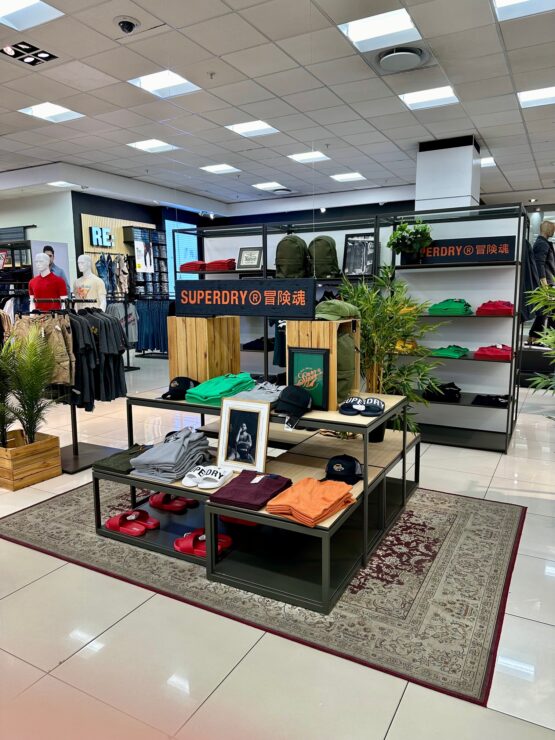Walking through one of Woolworths’s flagship stores, say, at Sandton City, can be disorienting. This is not the Woolies your mom used to shop at! Sure, there are the chino and shirt staples you’d be familiar with, but along with this, there is a near-cacophony of third-party brands all fighting for attention.
There are two precedents for this. First, Woolworths’s own Country Road, Trenery and Witchery brands occupy prime space in its largest clothing stores. In fact, the very first marque one sees at some of its stores is one of the Country Road Group brands.
ADVERTISEMENT
CONTINUE READING BELOW
Read:
No, Woolies isn’t going to stop accepting cash
After WCafe, Woolies reduces cash tills in supermarkets
Second, in its Food business, it originally (think way back to the 1990s) only sold ‘first party’/private label products. Slowly, it introduced third-party brands, and today, you can buy a Cadbury chocolate, Coke, or Kellogg’s Corn Flakes at its supermarkets.
Soon after he started in the role, current CEO Roy Bagattini introduced Birkenstock shoes, Levi’s jeans (an obvious introduction given his career) and Sunglass Hut glasses. Bagattini assumed the job in 2020 as the world grappled with the Covid-19 pandemic.
Third-party brands
The group had blamed its shocking underperformance in the early part of this decade on a proposition that simply had too many private-label brands. At one stage, it had Woolworths, W Collection, Studio W, David Jones (since disposed of), Edition, and RE:. This, along with Country Road, Trenery, Witchery, and Mimco (since retired).
The thing is, the introduction of third-party brands didn’t stop with Levi’s and Birkenstocks. Over time, Woolies has steadily added additional brands, including heroing Dyson in its Home unit (it has previously elevated SMEG, Nespresso, Nutribullet and Bosch).
Sunglass Hut (owned by Essilor Luxottica) appears slightly different from the rest, as these counters seem to be clear-cut concessions in its larger stores. That said, the denim presence of Levi’s, and now Guess, may well also be a concession. In major stores, it has now also introduced the Superdry brand. This, together with the multitude of third-party and Country Road Group brands, makes the experience of shopping in these stores somewhat reminiscent of visiting department stores a decade or three ago.
Parts of the Woolies store at Sandton City, for example, don’t look that different from what Edgars – or indeed Stuttafords – attempted to offer customers during its heyday.
This strategy echoes Woolworths’s attempt nearly 15 years ago to introduce Puma in 11 of its stores. This failed dismally, and the Puma-branded spaces within each store were swiftly repurposed to Woolies’s own brands.
However, the market is markedly different today from what it may have looked like around the time the country hosted the Fifa World Cup.
The problem …
There is a problem. Woolworths is attempting to target both the affluent and the mass market.
Its massive stores, such as those at Sandton City, the V&A Waterfront, and the Mall of Africa, are not going anywhere. Here, the Beauty proposition plays an outsized role – not surprising after the fading of Edgars in recent years (yes, it retains its Edgars Beauty proposition, but this is nowhere near the leadership position it held in the market 10 or 20 years ago).
ADVERTISEMENT
CONTINUE READING BELOW
But Woolworths has also steadily and rapidly been rolling out ‘basics’ stores, labelled W Edit, in centres and markets where it ordinarily wouldn’t be able to open a Woolies. These include neighbourhood centres where it is competing directly against Pick n Pay Clothing, and also malls in areas where you wouldn’t expect to find a Woolies.
These W Edit stores, which look like a Woolies and quack like a Woolies – are relatively indiscernible from a normal small Woolies store.
Herein lies the conundrum. Will these completely different offerings resonate with customers who may well experience both formats?
Read:
Get ready for Woolies Pet
Uniq: Shoprite sacrifices a little margin to beat Woolies on price
Of course, grocery retailer Checkers has proved this strategy works with its Fresh X strategy, where its next-generation supermarkets have Kauai and/or Starbucks and/or Krispy Kreme counters, and any number of additional luxuries, versus a stock-standard no-frills offer at some of its other ageing stores. It appears customers aren’t (yet) confused – one is a Checkers, the other a ‘nice’ Checkers.
Can this translate to clothing retail?
A Stuttafords waiting to happen?
The other question is whether shoppers actually want this. The collapse of Stuttafords clearly shows customers didn’t want a ‘classic’ department store offering, and the near-demise of Edgars perhaps reiterates this.
There are branded outlets that sell these products in the centres where Woolies has gone big. Shoppers can visit Levi’s, Guess, Superdry, Birkenstock and (any number of) Sunglass Hut outlets in the same mall.
Can Woolies make this work? (Based on the fact that these brands are still all being afforded floorspace, it appears that there is a positive contribution to sales growth and trading densities overall.)
More importantly – at least in volume terms – can Woolies make its W Edit entry-level offer stand out? Here, the jury is out …




